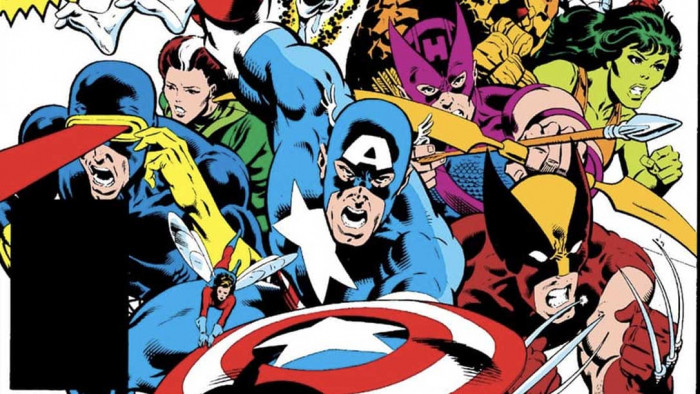There aren’t many days that see your life change beyond all recognition.
For Chad Harbach, a day in early spring of 2010 was one of them. It was the third day he’d spent pacing the length of his New York apartment. Pacing and waiting for the call. When it came, it delivered a number. And the number was big.
Bigger than anybody had anticipated. Bigger than he could ever have imagined in his most absurd fantasies a decade before, when he’d simply sat down and begun to write about what he knew.
And what first-time author Harbach knew was baseball.
“My earliest memories are of my father pitching me Nerf balls in our living room, when I was just barely old enough to stand,” Harbach, now 35, tells ShortList.
The passion instilled in the author during those formative father-son sessions in Racine, Wisconsin never left him. He played baseball until he was 17 and became a life-long and fervent fan of local team the Milwaukee Brewers. As an aspiring but frustrated twentysomething novelist, when it came to writing a book, to him, its subject matter was obvious.
“Baseball is such a tense, quiet, psychological game, with a kind of loneliness at its core,” Harbach says. “It seemed perfect fodder for a novelist.”
So now his story leaps to the happy ending with that phone call spelling out the six numbers on the large cheque for his debut novel, right?
Well, not quite.
BARREN SPELL
Harbach began crafting The Art Of Fielding while studying for a masters in fine art and then working as a copy editor and (unpaid) editor of New York literary journal n+1.
“There were times when I became discouraged, even despondent, and laid the book aside for months on end,” Harbach admits. “But I never thought seriously of abandoning it. I was stuck with it, and my fear was that I’d work — or procrastinate — for the rest of my life and never finish it.”
As the years ticked by, he wasn’t the only one with concerns.
“My friends and especially my family were worried that I’d gone off track, and wished I’d find a job that gave me health insurance. I wished it myself. To be poor and persistent at 33 is harder, and less romantic-seeming, than it is at 25.”
Harbach ploughed on, unable and unwilling to untangle himself from the grip of the book. And, finally, after nearly a decade, The Art Of Fielding was complete. Centring on a Wisconsin college baseball team and their vulnerable shortstop [fielder] Henry Skrimshander, Harbach mailed his coming-of-age tale to a handful of agents.
One was Chris Parris-Lamb, who was also a subscriber to Harbach’s magazine. When the pages landed with a thud on his desk, his initial response was one of healthy scepticism.
“n+1 was well known for a lot of things, but writing about sports was not one of them,” he says. “Frankly, I was unsure that Chad would be able to write authoritatively enough about the game to make me believe it.”
Then he started to read.
“It took nothing more than the prologue to convince me that I was in the hands not only of someone who knew the game inside out, but I was also about to spend 500-plus pages with a great writer of prose.”
In fact, Parris-Lamb felt that he was holding the pages of a “masterpiece” in his hands. But he also knew that its success was in no way guaranteed. The publishing industry was emerging from a dark few years where the headlines were not proclaiming big-money signings of new authors. Never mind the fact that the literary landscape was being dominated by werewolves and vampires.
“There’s so much disappointment in this business — great books are not reaching the readership they deserve,” says Parris-Lamb, “We’re conditioned to manage our own expectations, so you can’t help but pick things out about a book that you think might work against it in the marketplace. How does one pitch this book? It’s about baseball and an intergenerational gay love affair; the plot turns on a primary character’s sudden inability to throw a baseball…”
But for the young agent, the real universal appeal of The Art Of Fielding lay simply in the fact that it “shines a light on our better selves, the kinds of people we could be, if we tried”.
BIG DEAL
Enthused about the manuscript, Parris-Lamb spent the morning writing an earnest email, appealing for Harbach to sign with him. Harbach, meanwhile was, very quietly, going broke. He’d lost his part-time copy-editing job and was scraping together rent from short-term editing gigs or hand-outs from friends.
Parris-Lamb started to organise a bidding war. Everything hung on a major publisher snapping up the book. And paying big.
Manuscripts were dispatched across the city in preparation. During day one of the bidding, it started to look like Harbach’s days of financial hardship were gone for good. By the end of the third day, that was a certainty. Little, Brown And Company won the rights to publish The Art Of Fielding with a bid of $650k (£410k) — one of the highest figures ever for a male fiction debut.
But it didn’t stop there.
Before the novel had even reached the shelves, Vanity Fair published a book about the book, rave reviews flooded in and several lauded contemporary authors offered their praise — Jay McInerney describing how “I gave myself over completely and scarcely paused for meals” while reading it. International rights were sold across the world. HBO quickly snapped up the television deal.
Now, after the whirlwind, as he gets used to his new status as one of the most feted US authors in years, Harbach reflects on that phone call. “It’s hard to reconstruct the mental state,” he reflects. “Stunned, I suppose. There was a powerful feeling of relief.” A sentiment echoed by Parris-Lamb: “It was like this unspoken thing. We both knew it had changed his life.”
The Art Of Fielding is published on 5 January, priced £16.99 (Fourth Estate)
Latest
Related Reviews and Shortlists










